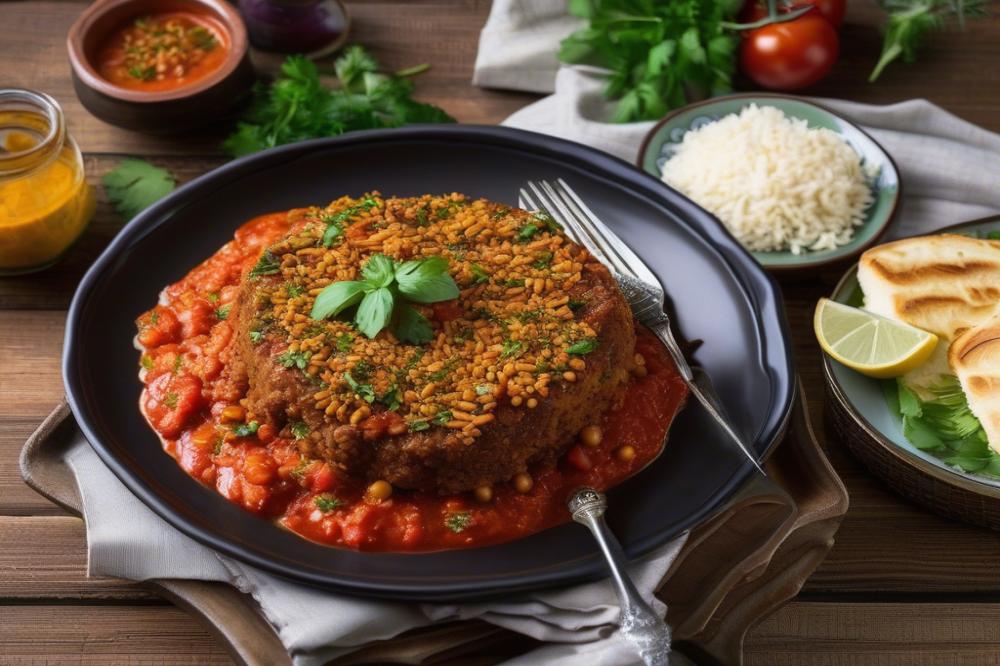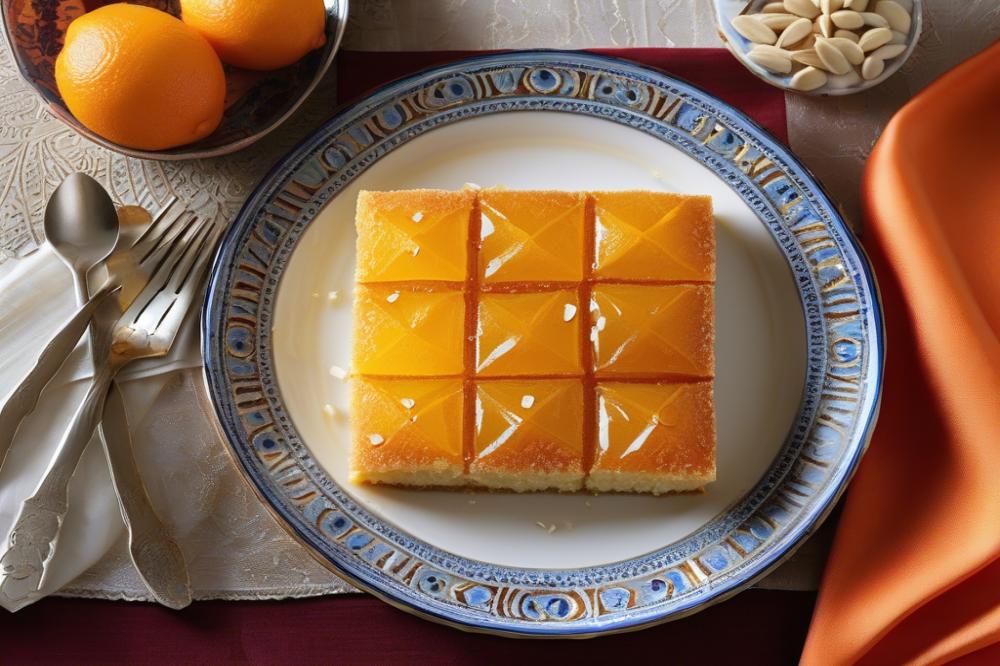A Guide to Moroccan breakfast: Dishes You Must Try
Introduction to Moroccan breakfast
Moroccan breakfast represents more than just the first meal of the day; it reflects a rich tapestry of culture and tradition woven through Moroccan cuisine. Unique breakfast recipes showcase an array of flavors, textures, and ingredients native to the region. Each dish stands out, inviting people to indulge in the bounty of fresh local produce.
In Morocco, sharing a meal holds deep social significance. Breakfast often becomes a communal experience where families gather to enjoy delightful offerings, strengthening bonds and fostering a sense of togetherness. This practice is especially cherished in the morning fajar, as the sun rises over the landscape, awaking both mind and spirit.
Flatbreads play a crucial role in the breakfast spread, serving as a vehicle for flavors. Msemen, with its crispy layers, is often enjoyed alongside honey or olives. Baghrir, with its delightful spongy texture and honey drizzle, is also a popular choice. Soups have their place too. Harira, a hearty soup packed with nutrients, can be found on many breakfast tables.
Mint tea is nearly essential at breakfast. Its fragrant aroma fills the air, inviting everyone to savor its refreshing taste. Sweet pastries add a final touch, creating a feast for both the eyes and palate. The diverse array of traditional dishes ensures that every meal feels special. Breakfast is indeed a vibrant celebration of Moroccan culture, inviting all to partake in its warmth and hospitality.
Moroccan Breakfast: An Overview

A traditional breakfast in Morocco is a vibrant experience. Family and friends gather around the table, creating a warm atmosphere. This meal often serves as a time for connection and conversation. Sharing food is a fundamental part of Moroccan culture.
Commonly enjoyed items include msemen and baghrir. These pancakes are staples in breakfast recipes. Msemen, with its flaky layers, is often served warm. Baghrir, known as the “thousand hole pancake,” has a unique texture that pairs well with syrup or honey. They reflect the importance of freshness in each bite.
Another beloved dish is harira, a hearty soup filled with vegetables and spices. It is not only nourishing but also symbolizes hospitality. Enjoying such dishes, alongside olives and various flatbreads, highlights the diverse flavors found in Moroccan cuisine.
Sweet elements feature prominently in a Moroccan breakfast. Honey drizzled over flatbreads or pastries adds a delightful taste. Sweet pastries, rich with nuts and syrup, provide an exciting variety. Mint tea rounds off the meal, offering a refreshing end to the morning ritual. The warmth of the tea complements the food, enhancing the whole experience.
Spices play a significant role as well. They bring depth and character to each dish. Cardamom, cinnamon, and other flavors create a distinct profile that defines Moroccan breakfasts. This initial meal often sets a joyful tone for the day ahead.
In summary, indulging in breakfast in Morocco means embracing a mix of flavors and textures. It is about laughter, sharing, and enjoying the richness of life. The ritual transforms a simple meal into a cherished moment with loved ones.
Must-Try Moroccan Breakfast Dishes

Msemen
Msemen is a popular Moroccan flatbread that can be served plain or filled with various ingredients. It is fluffy, crispy, and often enjoyed with honey.
Ingredients:
- 2 cups all-purpose flour
- 1 cup semolina
- 1 teaspoon salt
- 1 teaspoon sugar
- 1 cup warm water (approx.)
- 1/2 cup melted butter
- 1/4 cup vegetable oil
Cooking Instructions:
1. Start by mixing the flour, semolina, salt, and sugar in a bowl.
2. Gradually add warm water and knead until a soft dough forms.
3. Divide the dough into small balls.
4. Allow them to rest for about 30 minutes.
5. Flatten each ball and brush with a mixture of melted butter and oil.
6. Fold the edges inwards to form a square or rectangle.
7. Heat a skillet over medium heat and cook each msemen for 3-5 minutes on each side until golden.
Nutritional Information (per serving):
– Calories: 150
– Protein: 3g
– Fat: 7g
– Carbohydrates: 20g
Baghrir
Baghrir, often called the “thousand-hole pancake,” is light and spongy. It absorbs honey wonderfully, making it a delightful treat.
Ingredients:
- 2 cups semolina
- 1 cup warm water
- 1 teaspoon instant yeast
- 1 teaspoon baking powder
- 1/2 teaspoon salt
- 1 teaspoon sugar
- More warm water for consistency
Cooking Instructions:
1. In a bowl, mix semolina, yeast, baking powder, salt, and sugar.
2. Gradually add warm water, stirring until you achieve a pancake-like batter.
3. Allow the batter to rest for about an hour.
4. Preheat a skillet over medium heat.
5. Pour small circles of batter onto the skillet.
6. Cook until bubbles form on the surface and the sides lift easily.
7. Do not flip; just remove when cooked.
Nutritional Information (per serving):
– Calories: 120
– Protein: 4g
– Fat: 0.5g
– Carbohydrates: 26g
Harira
Harira is a hearty soup often enjoyed for breakfast. It is packed with nutrients and flavors, making it a filling dish.
Ingredients:
- 1 cup lentils
- 1/2 cup chickpeas
- 1 onion, finely chopped
- 2 tomatoes, grated
- 1/2 cup fresh cilantro, chopped
- 1/2 teaspoon turmeric
- 1 teaspoon ginger powder
- 4 cups vegetable broth
- Salt and pepper to taste
Cooking Instructions:
1. In a large pot, heat some oil over medium heat and sauté the onion until soft.
2. Add the grated tomatoes, lentils, chickpeas, spices, and broth.
3. Bring to a boil and then reduce the heat.
4. Simmer for about 30-40 minutes until lentils are tender.
5. Stir in the cilantro before serving.
Nutritional Information (per serving):
– Calories: 250
– Protein: 12g
– Fat: 4g
– Carbohydrates: 43g
Mint Tea
Mint tea is an essential beverage in Moroccan cuisine. It is refreshing and often served sweetened.
Ingredients:
- 1 bunch fresh mint
- 1-2 tablespoons green tea leaves
- 4 cups water
- Sugar to taste
Brewing Instructions:
1. Boil the water in a kettle.
2. Rinse the green tea leaves with a small amount of boiling water to remove bitterness.
3. Add the mint and sugar to the pot.
4. Pour the boiling water over them.
5. Allow the tea to steep for about 5 minutes before serving.
6. Pour into small glasses, sometimes from a height to create foam.
Nutritional Information (per cup):
– Calories: 30 (depending on sugar)
– Protein: 0g
– Fat: 0g
– Carbohydrates: 8g
Olives, Honey, Flatbreads, and Sweet Pastries
Olives are a staple in the Moroccan diet. Their savory flavor complements sweet dishes well. Honey is often drizzled over msemen or baghrir, adding sweetness and richness.
Flatbreads can be used to scoop up harira or eaten alone. Various sweet pastries, such as baklava, finish off the meal with a touch of decadence. Each item plays a vital role in creating a balanced and delightful breakfast experience.
Cultural Significance of Moroccan Breakfast

The Moroccan breakfast is not just a meal; it reflects deep-rooted traditions and a vibrant culture. Meals are often a time for families to gather and share stories. In rural areas, breakfast can take on a more communal feel. Conversely, in bustling cities, it may be quicker and more convenient, yet still offers a taste of authentic flavors.
Regional variations abound in the breakfast dishes. For instance, in Marrakech, msemen—flaky, layered flatbreads served with honey—are popular. Nearby, Fes locals may opt for baghrir, known as “thousand holes pancakes,” often served with a drizzle of olive oil or honey. These small differences showcase how location influences food.
A breakfast spread often includes not just bread but also sweet pastries. These delightful treats can be found in markets and bakeries. While some people enjoy a bowl of harira, a hearty soup, others might prefer a lighter fare. Olives and fresh vegetables are common choices on the table, adding a savory balance.
Mint tea plays a crucial role in Moroccan meals. The act of pouring the tea is an art form, symbolizing hospitality. Drinking it after breakfast is customary, providing a refreshing end to the meal. Offering this ritual to guests shows generosity and warmth.
This meal reflects the season as well. In warmer months, lighter options are favored. Warmth from spices in winter dishes, like harira, brings comfort. Regardless of the time of year, breakfast remains a vital part of daily life, bridging social gaps and connecting generations.
Tips for Preparing Moroccan Breakfast at Home
Creating a Moroccan breakfast in your own kitchen can be a delightful experience. Start by gathering essential ingredients that define Moroccan cuisine. While some items may be harder to find, there are substitutions that can help. For example, if you cannot find semolina for dishes like msemen, all-purpose flour works quite well. This flour can help you create a similar texture even if it’s not traditional.
A popular dish, baghrir, requires special ingredients like fine semolina and yeast. If you are unable to locate these, consider using pancake mix as an alternative. It may not taste exactly the same, but will still produce fluffy textures. Fresh yeast can sometimes be elusive, but dry yeast can be a reasonable substitute. This small adjustment will still bring some Moroccan flair to your meal.
Time to Enjoy
Timing your breakfast can also enhance the experience. Traditionally, Moroccan breakfasts occur in the morning, right after dawn or just before work begins. However, enjoying these meals during brunch can also be delightful. Pair dishes with fresh mint tea for a refreshing twist. Infusing the tea with plenty of fresh mint leaves helps capture the authentic taste.
Keep some basics on hand, like olives and honey. These items complement most meals beautifully. Serving olives with your flatbreads is traditional and satisfying. Drizzling honey over warm pastries or msemen adds a touch of sweetness that many people appreciate. These little additions can elevate your breakfast, making it feel special.
Sweet Pastries and More
Sweet pastries are a must-try and can be made at home. Common recipes incorporate ingredients like almond paste or honey. If almonds are hard to find, opt for other nuts like walnuts or pecans. Filling layers of dough with these can deliver a delightful flavor profile.
Experimenting is part of the fun! Each dish offers room for creativity. Don’t hesitate to modify recipes to suit your tastes. Many families have their own unique twists on harira, a hearty soup often enjoyed at breakfast. You can try adding extra spices or incorporating vegetables that you have on hand.
Wrapping Up the Moroccan Breakfast Experience
Moroccan breakfast offers a delightful journey into vibrant flavors and rich traditions. This morning meal reflects the warmth and hospitality found in Moroccan cuisine. Dishes like crispy msemen, fluffy harcha, and sweet baghrir create an inviting spread that awakens the senses.
Sharing these breakfast recipes can turn any ordinary morning into a special occasion. Imagine gathering around a table with friends or family, exchanging stories and laughter while enjoying a plate of freshly made crepes and a steaming cup of mint tea. The experience is not just about the food; it is about connection and contentment.
Trying your hand at these dishes at home can be a rewarding adventure. Preparing traditional meals allows you to explore new techniques, ingredients, and flavors. Even if you’re new to cooking, the process can be simple and enjoyable. Following these recipes can bring a slice of Moroccan culture to your kitchen.
Consider inviting loved ones to join in on this culinary journey. Working together to create delightful Moroccan breakfast spreads can inspire joy and foster connections. So, why not roll up your sleeves, gather some ingredients, and share the beauty of this vibrant meal with those who matter most?



